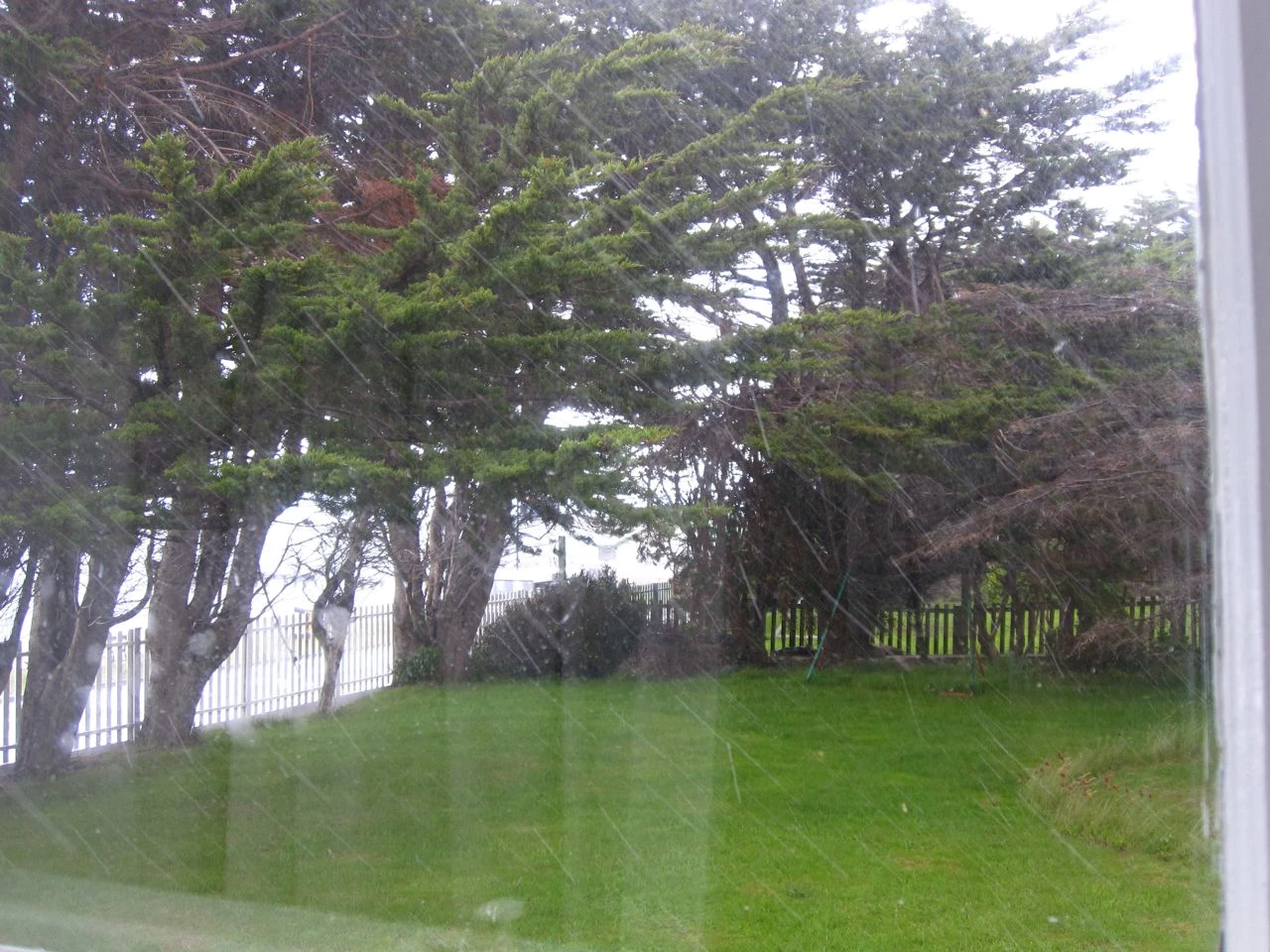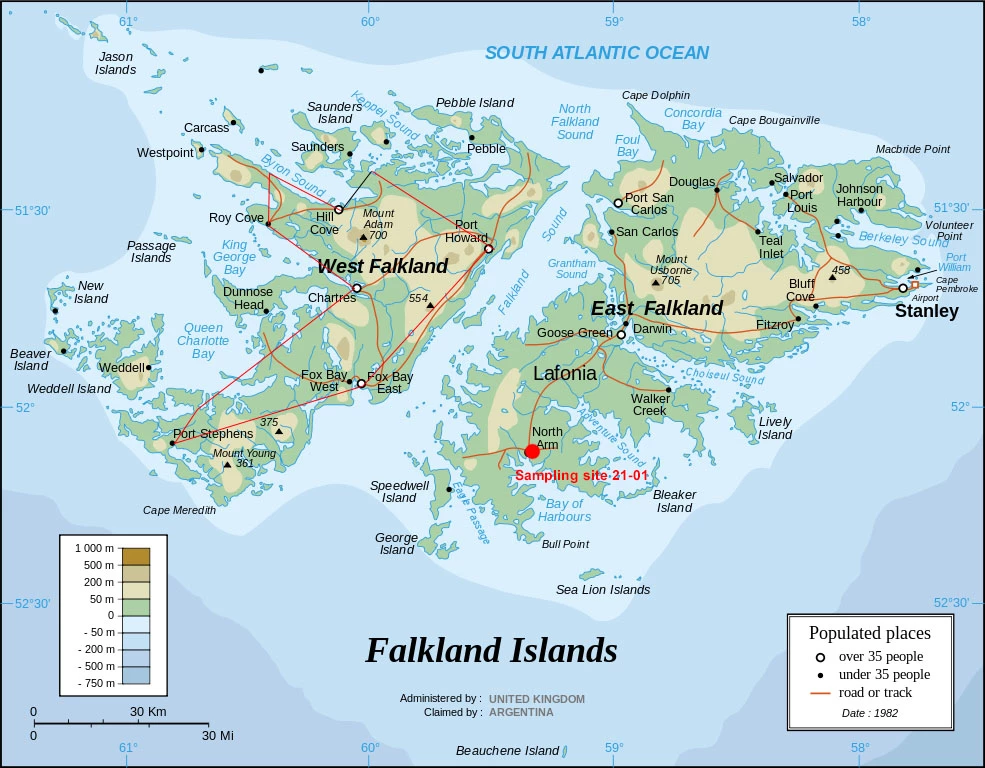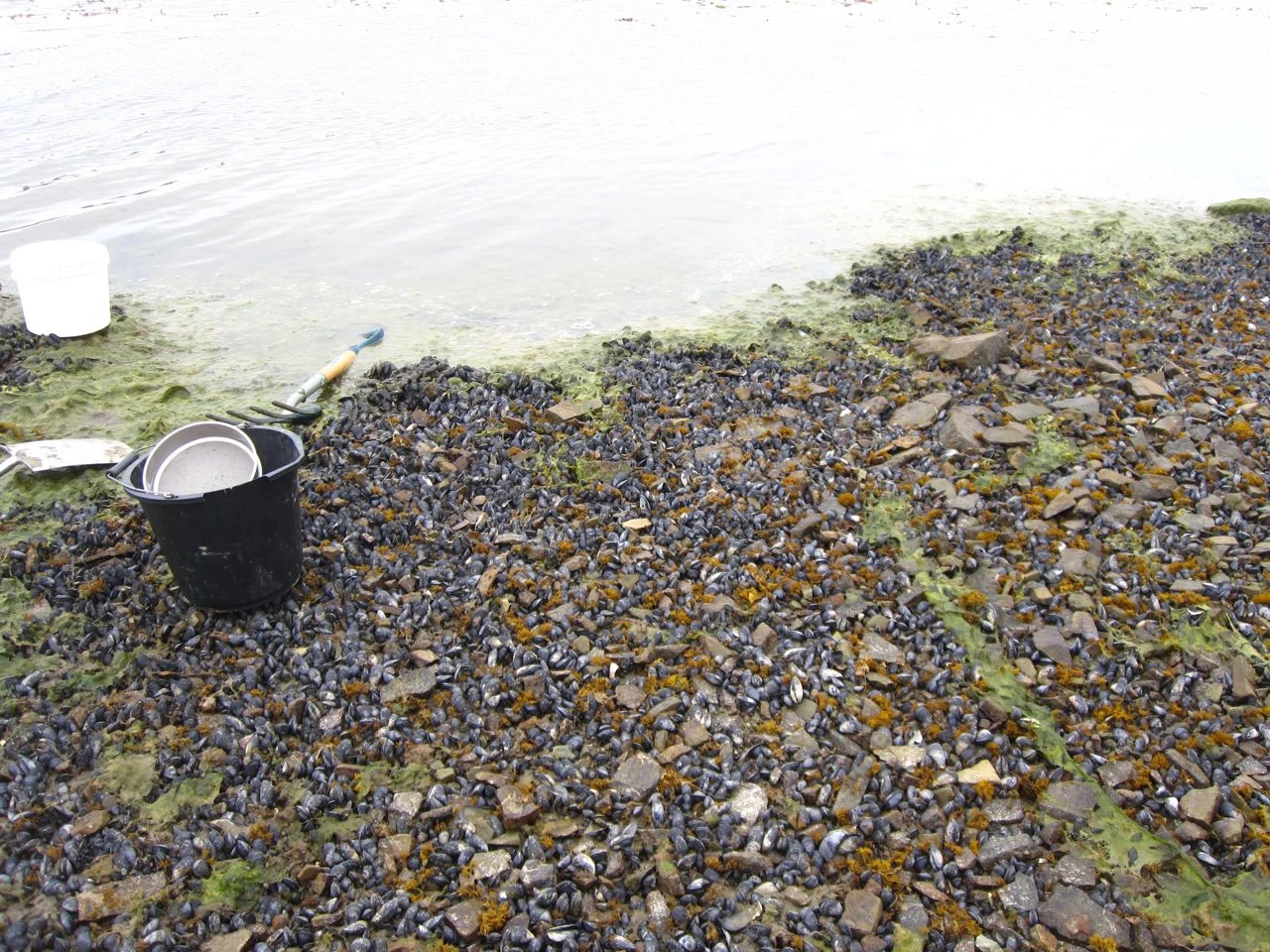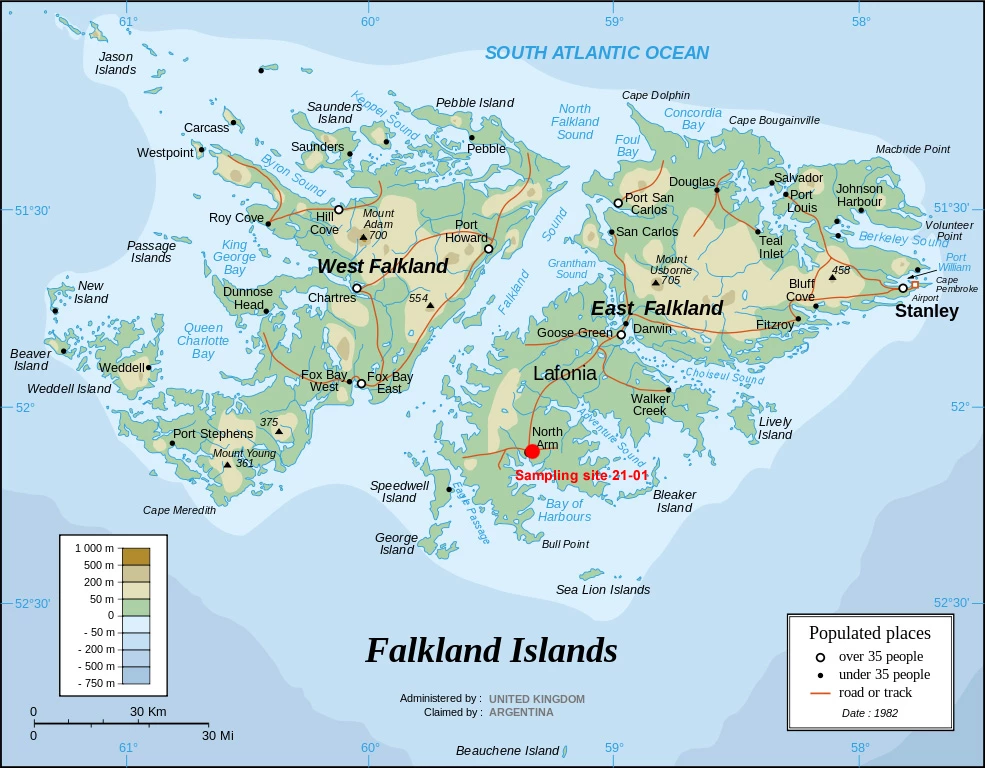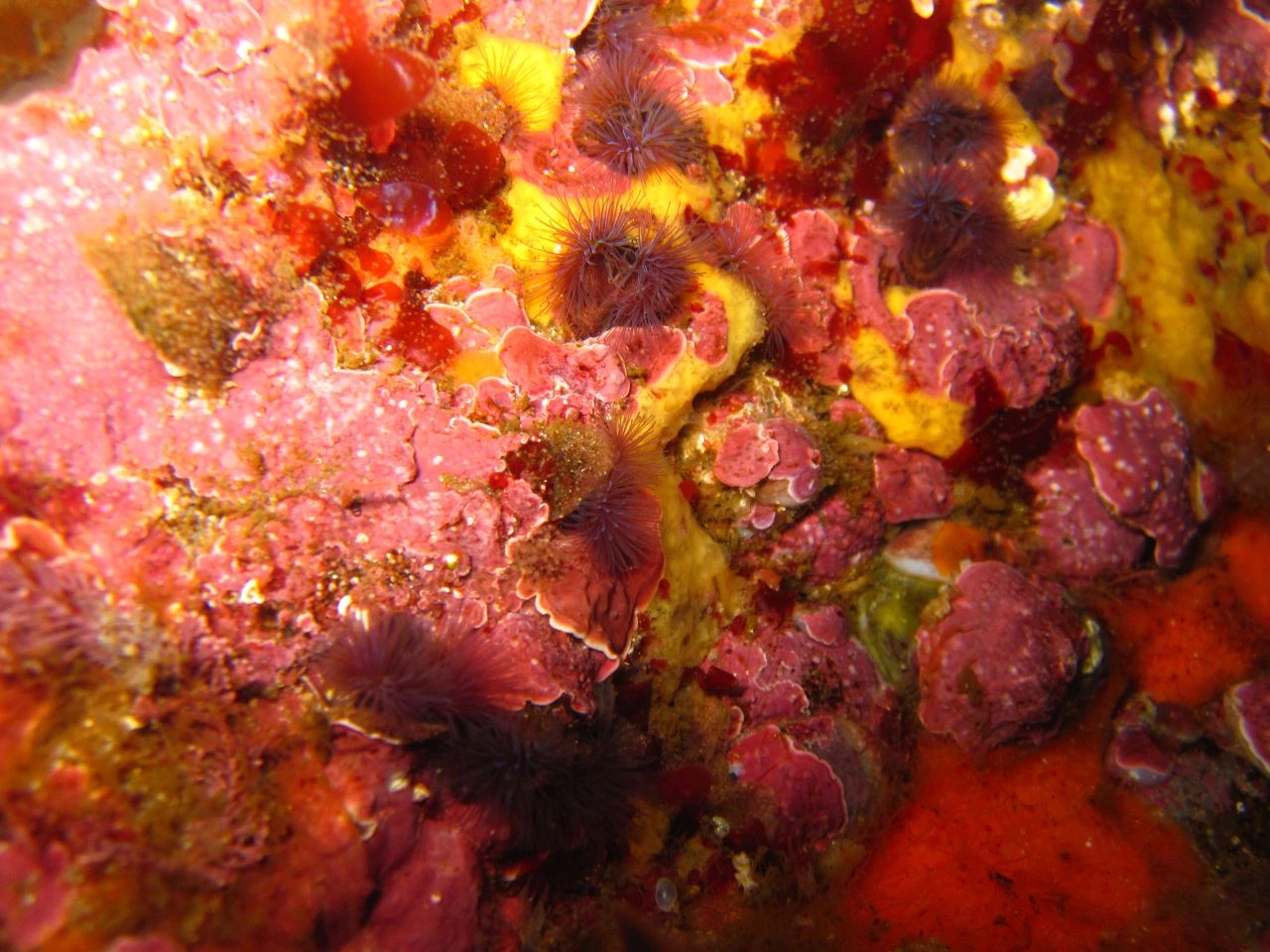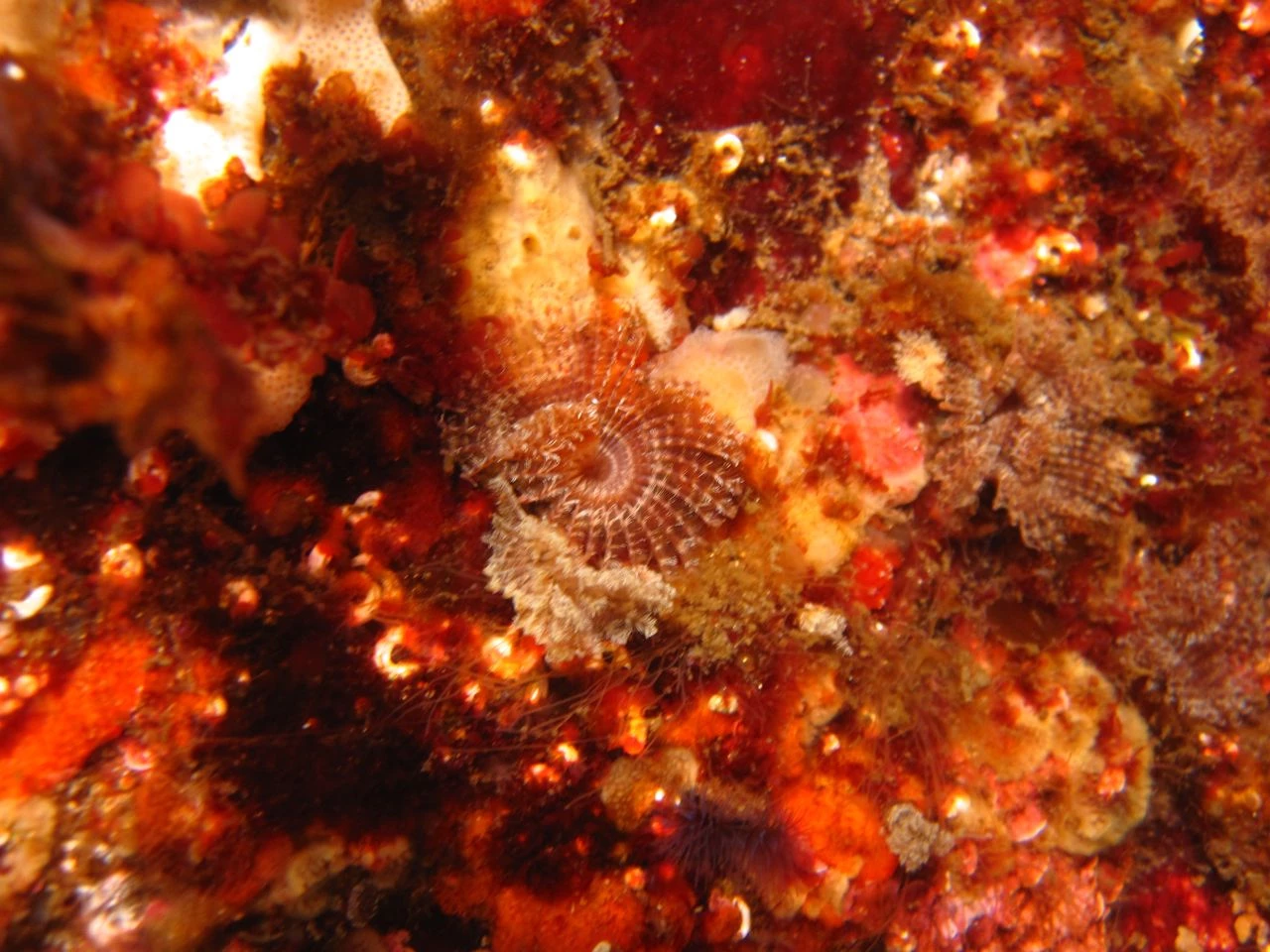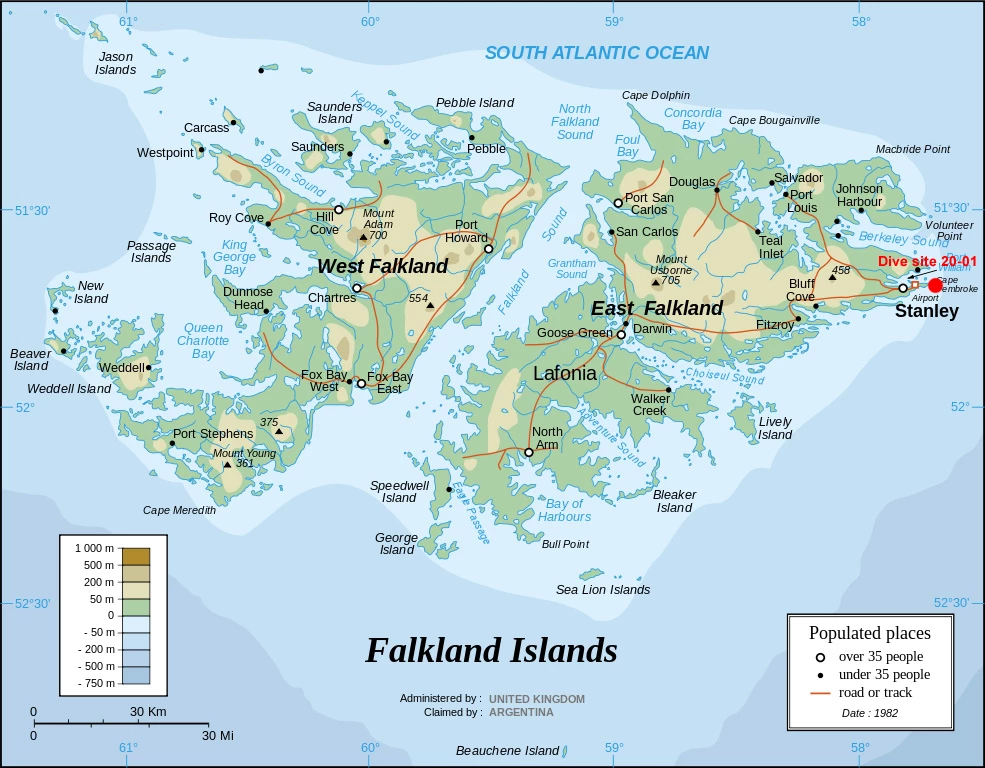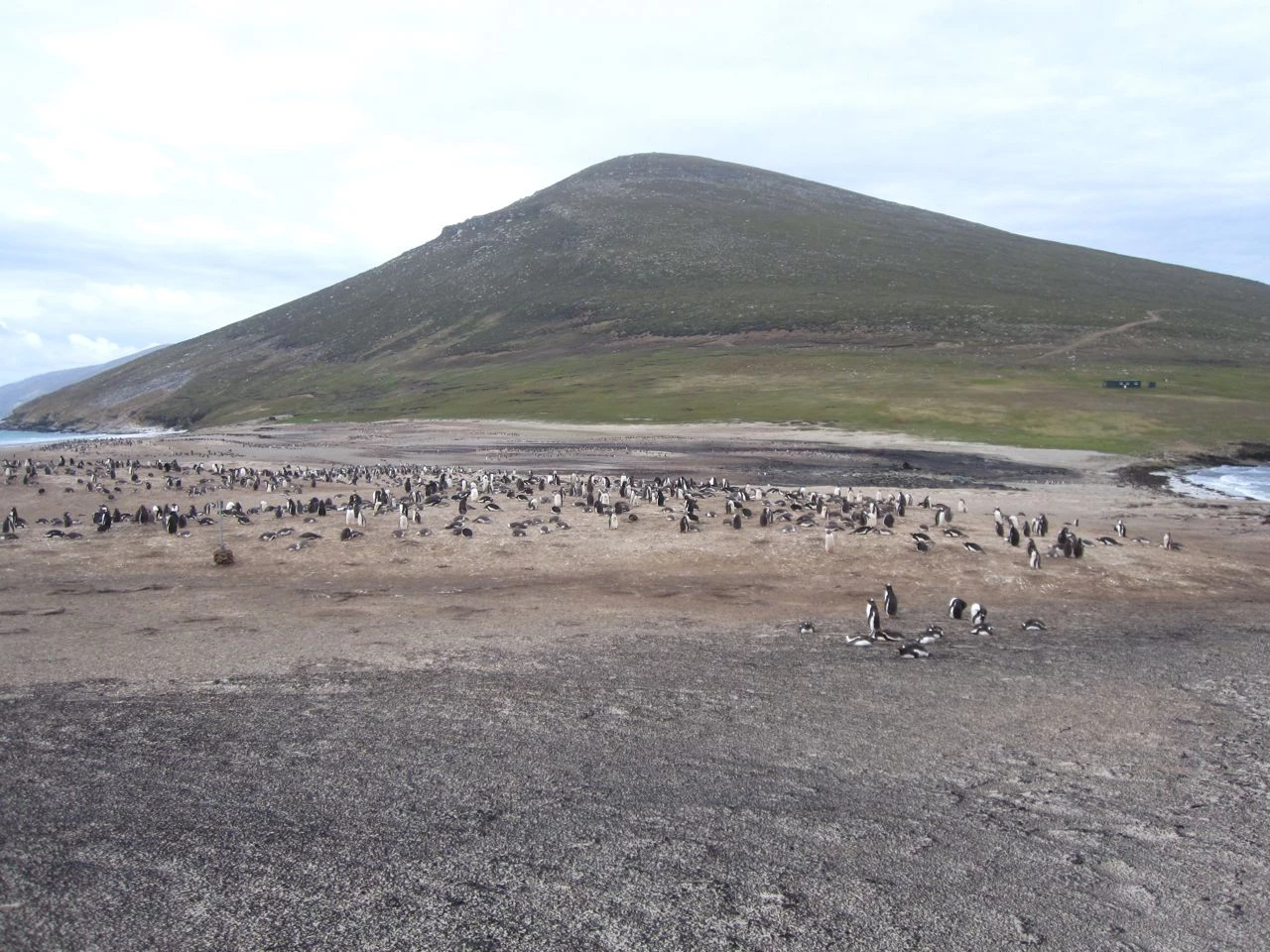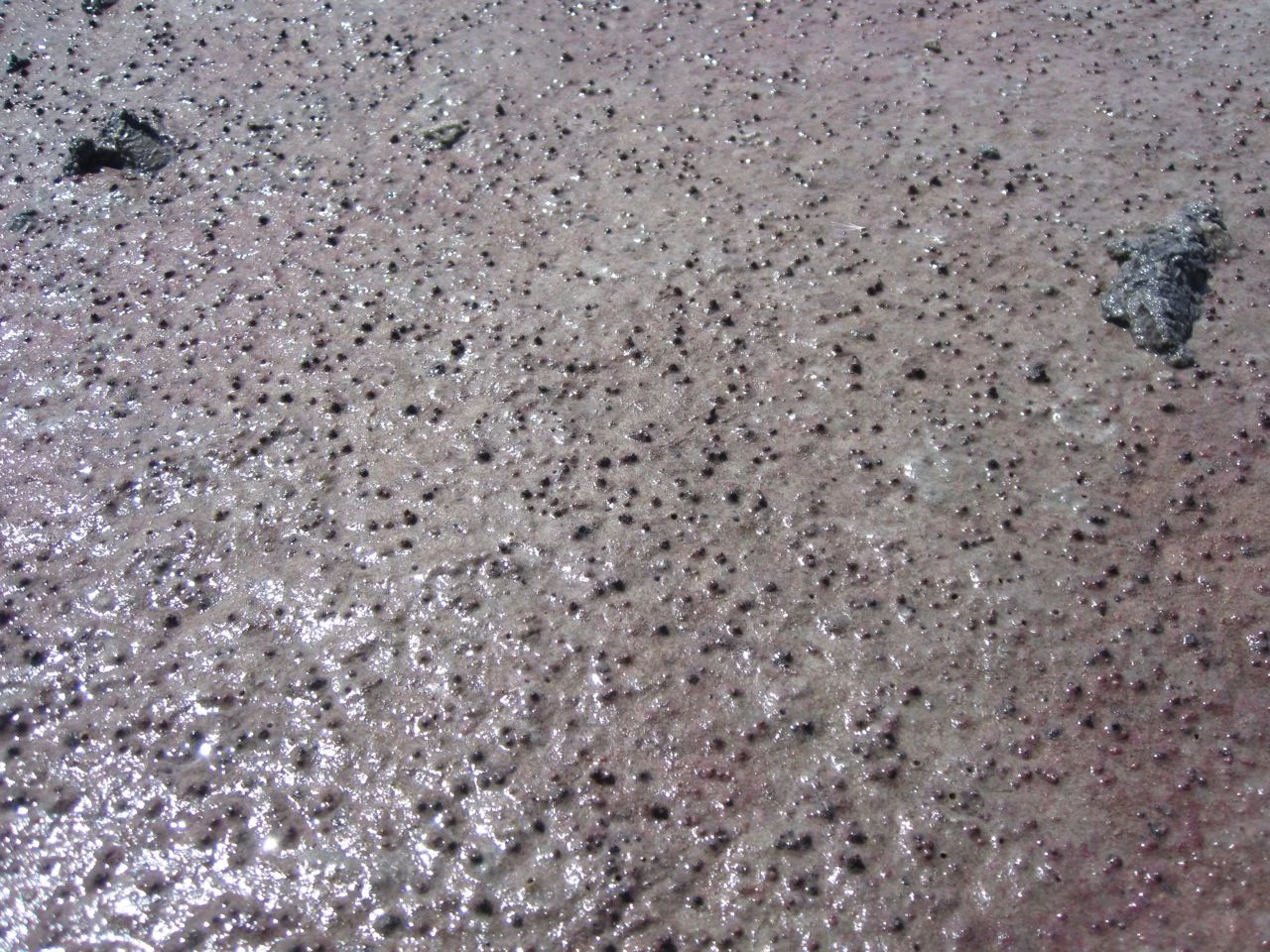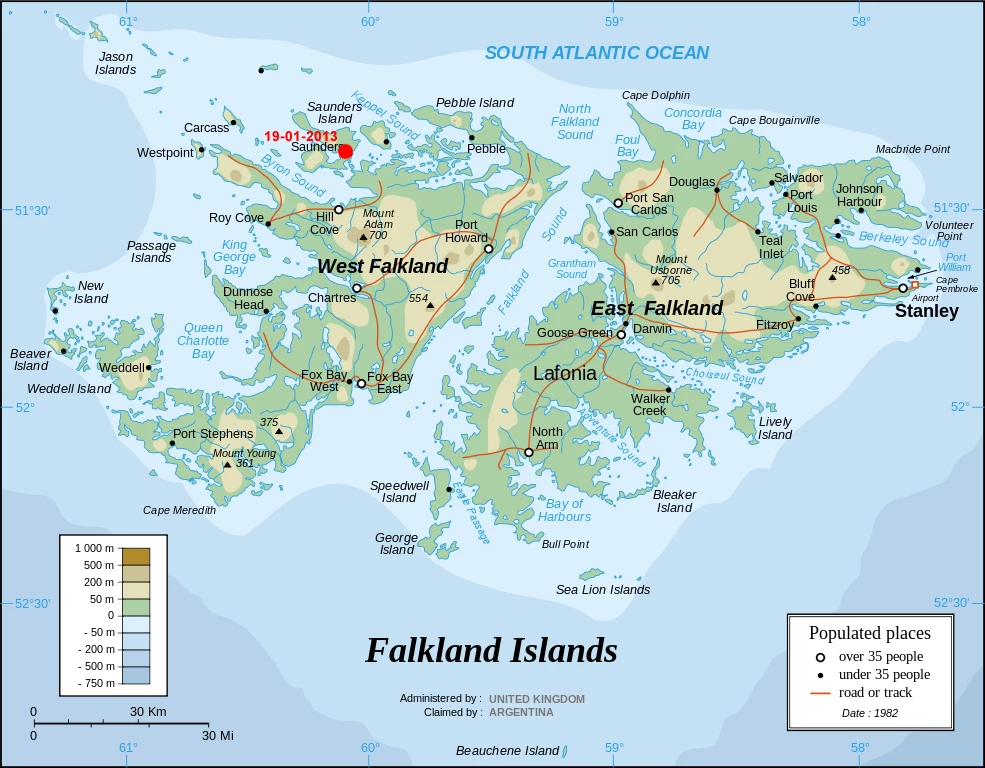19.01.13: I’ve just come back from 2 days out on Saunders Island, one of the larger outer islands in the north west of the area. The island is host to a mountain of wildlife and I was hoping to see lots of this while at the same time being able to continue my sampling on such a distant point. Although I was staying in the settlement on the east coast of the island, the owners gave me a lift to one of the more northern parts of the island known as The Neck (photo 1). This is a narrow stretch of land with sandy bays to the north and south so the idea was to try and sample both sides and be able to compare them. The low tide was not until the evening at 7.30pm and the owners generously agreed to come back and fetch me at 8pm so I would be able to do my sampling (it’s a 10 mile hike back to the settlement from there). The late tide also meant that I had time to do some walking of my own and visit the different penguin colonies in the area: Magellanic, Gentoo (photo 2), King and Rockhopper, all charming as ever particularly the curious gentoos who will come right up to you if you sit down and wait patiently. I was also surprised, and not a little dismayed, to find a large population of caracaras (photo 3) in the area, not my favourite bird as many will know. Any time you stop moving or put anything down, however briefly, a caracara will almost immediately turn up and start investigating, poking things with a very sharp talon to see if its worth flying off with.
Once the tide was about half way out on the north beach I set about poking around with my trowel. Nothing. Hmm. More holes, still nothing. This wasn’t good, the clean white/grey sand beaches the penguins are so fond of is obviously very bad for worms. I found nothing at all in the high shore region so tramped disconsolately down the beach before deciding to go and try the south beach. Nothing. Another hole, still nothing, the caracaras were shadowing me, either hoping or expecting me to give up and drop dead at any second. As I plodded along this beach my eye was suddenly caught by a discrepancy on the surface. Looking closer the little grey spots looked like small worm casts, so out came the trowel. Success! I was so happy, I wasn’t going to leave with nothing! There weren’t many but I did manage to collect a small variety of worms, always keeping a sharp eye on anything I put down and occasionally having to shoo-off the insistent thieving birdlife. As I moved further down the shore with the tide, the casts became slightly more common and I felt that at least I would have a representative collection for the area. Beaches are not always teeming with worms and this was obviously one of those. At the end I went back over to the north beach to see if I had missed those small signs of worm life. I still couldn’t see anything but had a dig down at low water and did find a sparse population of worms to collect. The worms in this habitat apparently only inhabit the mid-low shore and not high shore at all.
The next day, blessed with blue skies and warm sunshine, I planned a hike up the east coast towards a sandy bay one of the owners had told me about where he said he had seen evidence of worms before. I knew it wasn’t close and 2.5 hours later I made it. As low water had been early morning I knew I wouldn’t be able to sample properly but at least would be able to do a bit from midshore upwards. I stared in dismay at the billions of tiny worm holes (photo 4) on the surface of the soft sand. The only way to do this beach justice would be several hours and a large spade, neither of which I had. With the tide rapidly encroaching I did what I could before retreating. I realized there was not a single penguin to be seen on this beach. It would seem that penguins and worms do not mix, a good beach for one is a bad beach for the other. I continued my hike a short distance further so I could see one of the other main highlights of the island, the black-browed albatross colony (photo 5) that breed here, then I headed back.
I used the late tide that night to investigate the local harbour 5 minutes from the settlement, happily poking around the mud and rocky foreshore. Amazingly, there were many polychaetes (family Cirratulidae, photo 6) sitting right out on the surface of the mud all over the place. Under the flat rocks of the foreshore I found large white sipunculans (photo 7), relatives of the polychaete group and a species of polychaete that I don’t think I have had anywhere else, a definite highlight for the trip.
Saturday (today) saw me return to Stanley with my haul and I then spent the rest of the morning doing more formaldehyde washing-out from last weeks specimens and packing my first box ready to post back on Monday!
Photo 8 is a map of the Falkland Islands indicating where I was.
Teresa Darbyshire
